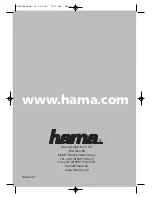
16
Instruction Book IB019009EN November 2017 www.eaton.com
AK-2-25, AK-2A-25, & AK-3A-25 LV-VSR
Breaker-To-Motor Starter Conversion
10. Tighten the fasteners using a wrench to hold the head of the
screw while tightening the retaining nut. DO NOT over tighten.
11. Torque the fasteners to 50 ft-lbs.
12. Replace the micro-switch to the fuse by gently pressing the
switch on to the mounting base.
13. Check the connections of the control wiring on the micro-
switch, if loose, tightening with a Phillips head screwdriver.
14. Install the top barrier back onto the LV-VSR.
15. Insert the four fasteners into the top barrier and tighten until
snug.
16. Electrically test the LV-VSR by using a test cabinet device or
equivalent. Make sure the LV-VSR will close and open normally.
17. Perform an ac hipot test per section 6 prior to insertion into
the switchgear.
18. Check the V201 contactor per section 6.3.2 prior to insertion.
WARNING
ALWAYS INSPECT THE LV-VSR AFTER ANY SHORT-CIRCUIT
INTERRUPTION. FAILURE TO DO SO MAY RESULT IN EQUIPMENT DAMAGE
AND OR DEATH.
5.2 ELECTRONIC OVERLOAD RELAY C440
The preferred overload relay provided on Eaton LV-VSR devices is the
electronic C440 relay. The relay offers four selections of trip classes:
1. The C440 overload device normally specified for the LV VSR
devices is the relay that provides two trip class selections,
10 or 20, plus a switchable ground fault trip system. The
ground fault trip threshold is 50% of the full load ampere
setting. See Figures 5.4 and 5.5.
Figure 5.4. C440 Overload Relay Faceplate and Functions
Figure 5.5. Ground Fault Unit
2. A second rarely used C440 overload relay is available in
a 3-phase and single phase form. The 3-phase and single
phase configured device allows four trip class selections:
10, 20, 30, and 10A. Figure 5.6 shows the C440 with four trip
class selections.
3. Refer to Figure 5.5 or 5.6. C440 relay features include a
push/pull button for trip and test, a push button for reset,
and the full load current dial. Adjacent to the FLA dial, the
C440 electronic overload relay has ‘dip’ switch selections for
trip classes 10 or 20. (Most applications conforming to ANSI
guidelines use trip class 20.) The second position enables
or disables the built-in ground fault trip system. The third
position of the ‘dip’ switch enables or disables the phase
unbalance protection of the device. The fourth position of
the ‘dip’ switch enables or disables automatic reset of the
relay (see special warning about using automatic reset
feature). An indicating light on the face of the relay signals
when current is passing through the LV-VSR and when a
trip has occurred. Rapid blinking of the indicating light on
the C440 indicates that trip is imminent. Make the preferred
‘dip’ switch selections prior to energizing the LV VSR for the
first time.
C440 NEMA Electronic Overload
1
LED (Unit Status)
3
Phase Imbalance Selection
2
FLA Dial
4
Operating Modes (Trip/Reset/Test)
LED
UNIT STATUS
1 flash / 2 seconds
Motor is running. Current < 1.15 Times the Dial Setting.
2 flash / 2 seconds
Motor is running. Current > 1.15 Times the Dial Setting.
No Flash
If the orange trip flag is visible, a trip has occurred.
No Flash
If the orange trip flag is not visible, motor is off or drawing < min FLA.
1
3
4
2
Figure 5.6. C440 Trip Current Adjustment and DIP Switches
Overload Tripping Current = 115%
Rotate FLA dial to current listed on motor nameplate for all motor
Service Factors.
Figure 5.7. Motor Service Factor Information for the C440
Overload Relay















































